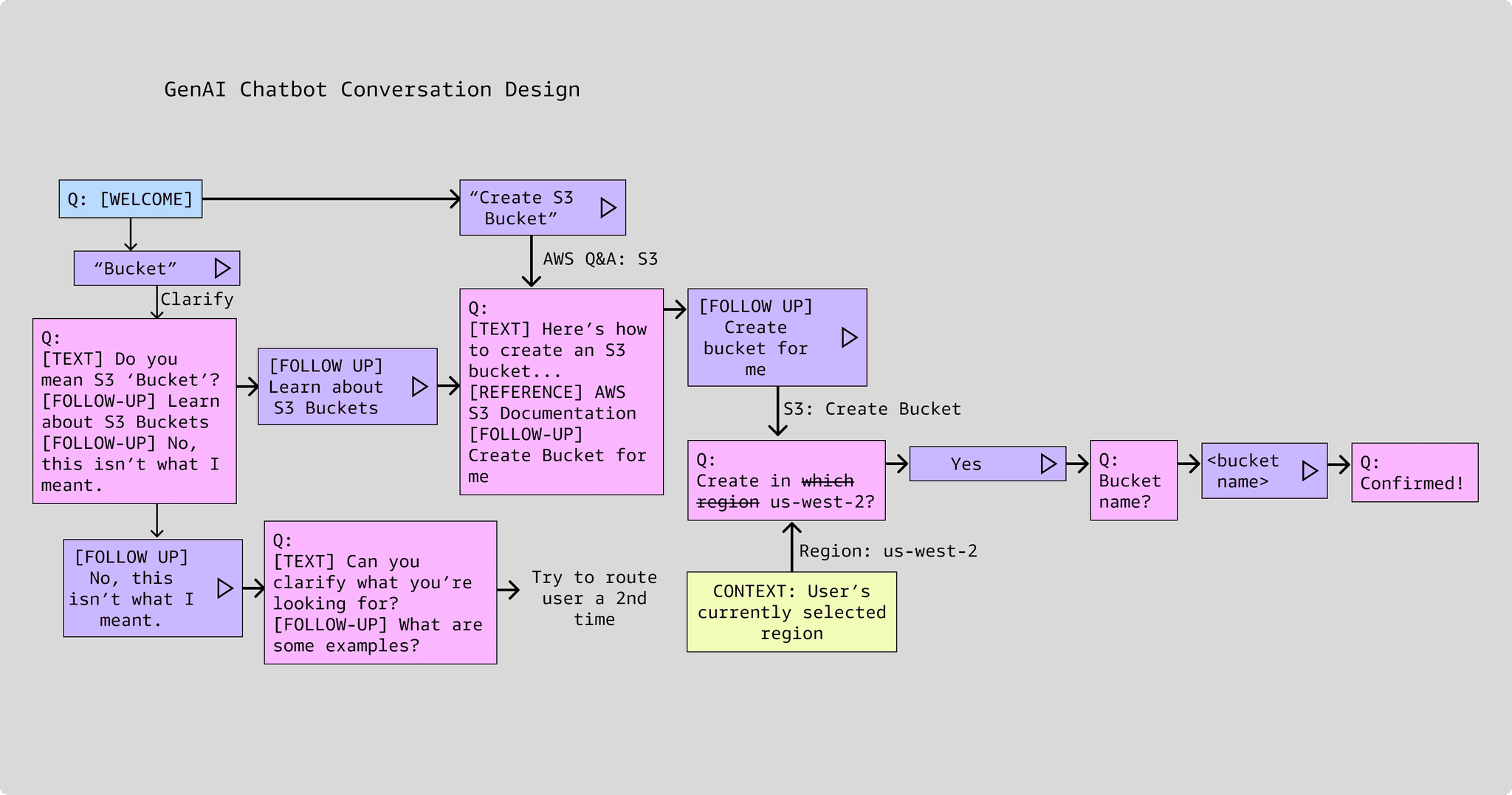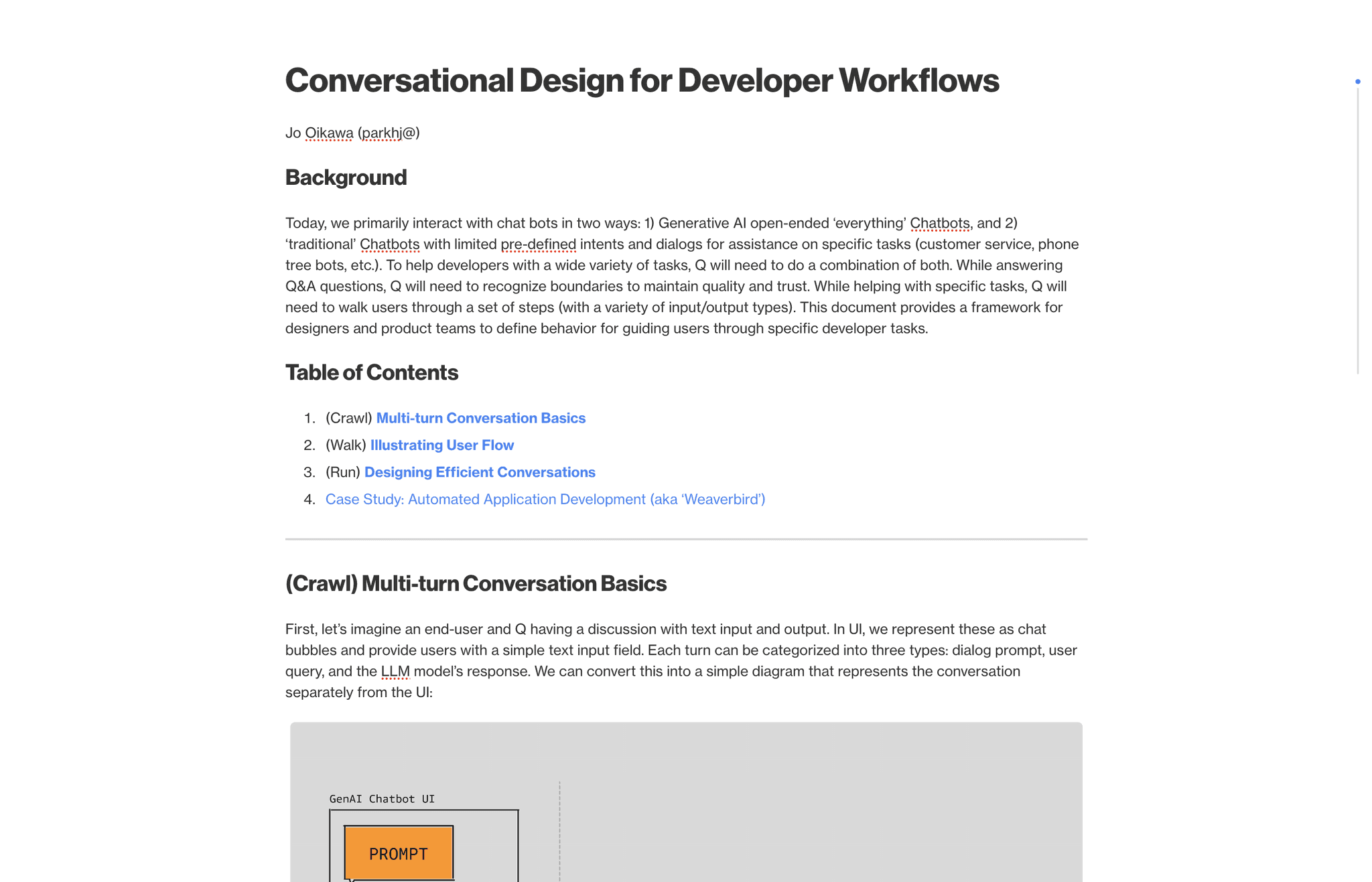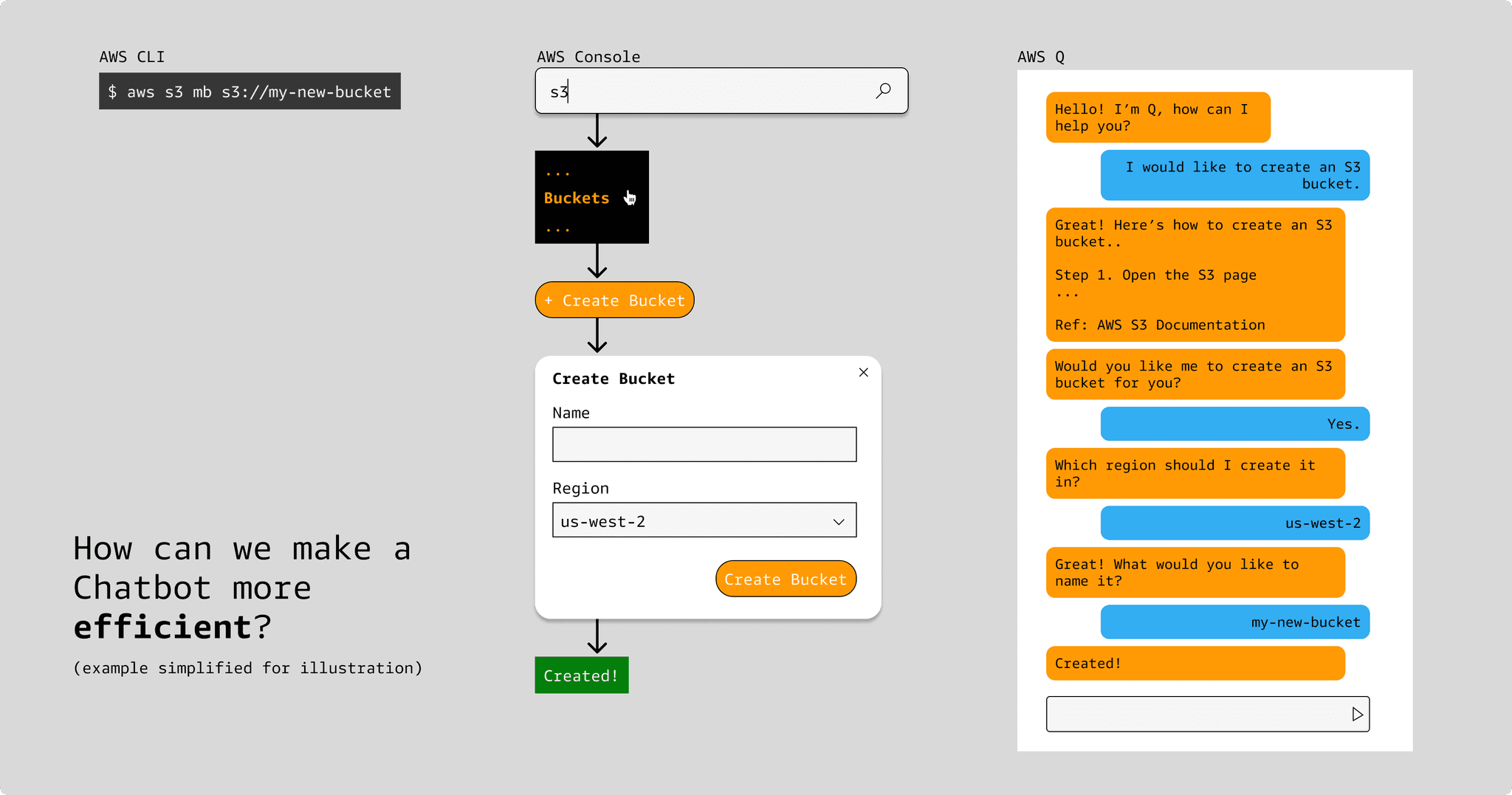Conversational Design for LLM-based Workflows
How I defined best practices and chat-based interaction patterns for AI-powered developer experiences.
Role
Lead Designer
Team
AWS AI/ML
Time
2023-2025
Areas
AI/ML
SYSTEMS
Background
After launching a set of code-completion tools for developers, my team heard resounding requests for a chatbot that could work alongside developers. While Large Language Models (LLMs) can respond to a wide variety of topics, we wanted to focus our experience on software development jobs to be done. The challenge was creating an experience that maintained the flexibility of chat while supporting structured workflows for specific development tasks. Traditional chatbot design approaches, which relied heavily on predefined conversation paths, wouldn't suffice for the dynamic nature of LLM-based interactions.
Approach
I began by building a deep understanding of both conventional conversational design and the unique capabilities of LLMs. Through research including industry literature and consultations with professional conversational designers from within Amazon, I identified where traditional patterns could be adapted and where we needed new approaches. Working closely with our science team helped me understand the LLM's capabilities and limitations, which informed how we could use UI elements and system prompts to guide interactions.
Digging up external research and resources
Diving into modern conversational design with simple examples
Working through high-level user journey for conversations about software development
Parallel to this research, I collaborated with another designer on developing our UI component system. This simultaneous work on conversational flows and interface elements allowed us to create a unified approach where each interaction pattern had clear corresponding visual components. Through stakeholder interviews and analysis of developer workflows, we identified key jobs-to-be-done that would drive our initial release.
Identifying UI needs to support a variety of chat-based workflows
Designing and reviewing the conversational design for our first software development agent
Results
The outcome was a comprehensive conversational design framework that balanced structure and flexibility. I documented best practices and created templated design artifacts that helped teams across AWS implement chat-based features consistently. This included a FigJam template with reusable components that mapped conversation flows to UI elements, making it easier for designers to visualize and iterate on their designs.
FigJam sticker sheet template
FigJam sticker sheet template
Slide from internal presentation on conversational design
To ensure quality and consistency, I established a review process for conversational design artifacts to support designers across my org. Working with copywriters, we also developed voice guidelines specifically for Amazon Q that aligned with AWS's broader communication principles. These resources, shared via internal wikis and the AWS UX group, have become essential tools for teams implementing AI-powered interactions across our platform.
Example from a partner team using conversational design with new UI patterns for variable output
To learn more about how this was applied, check out my case study on AI Agents for Software Development.









